The History of a Mouthful of Bread, Jean Macé [best autobiographies to read TXT] 📗
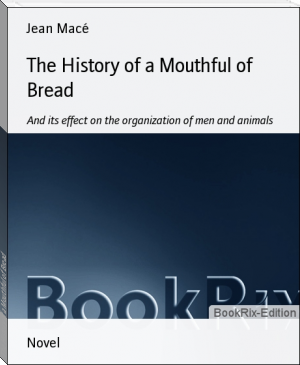
- Author: Jean Macé
Book online «The History of a Mouthful of Bread, Jean Macé [best autobiographies to read TXT] 📗». Author Jean Macé
and I also know the reason why. I have told you the same story twice over. You have not forgotten my wearisome description of gluten , and here I am, saying exactly the same thing of fibrine ! You conclude I am dreaming, and have made a mistake!
But no, I am wide awake, I assure you, and mean what I say. And if these details are the same in the two cases, it is for the simple reason that the two bodies are one and the same thing; gluten and
fibrine being in reality but one substance, so that were the most skilful professor to see the two together dried, he would be puzzled to say which came from the flour, and which from the blood. I mentioned that our muscles existed in a half-formed state in the blood. Here is something further. The fibres of muscles exist previously in full perfection, in the bread we eat; and when you make little round pills of the crumbs at your side, it is composed of fibres stolen from your muscles which enable the particles to stick together; and I say stolen from your muscles , because they are the gluten which you ought to have eaten. I hope the thought of this may cure you of a foolish habit, which is sometimes far from agreeable to those who sit by you.
This, then, is the first great aliment of nutrition , and you may make yourself perfectly easy about the fate of those who eat bread. If little girls should now and then have to lunch on dry bread, I do not see that they are much to be pitied. There is the starch to keep up their fire, and the gluten for their nourishment, and that is all they require. The porter above is the only one who finds fault. And in these days porters have become more difficult to please than the masters themselves.
Then as to babies who drink nothing but milk, you perhaps wish to know where they get their share of fibrine.
And I am obliged to own there is none in the milk itself; but, I daresay, you know curdled milk or rennet ? The same separation into two portions has taken place there which occurs in the blood when drawn from the arm; underneath is a yellowish transparent liquid,-that is the
whey ; above a white curd of which cheese is made, and which contains a great part of what would have made butter. By carefully clearing the curd from all its buttery particles you obtain a kind of white powder which is the essential principle of cheese, and to which the pretty name of casein is given because caseus is the Latin for cheese. I shall not trouble you now with details about casein ; but there is one thing you ought to know. A hundred ounces of casein contain as follows:-
Ounces.
Carbon 63
Hydrogen 7
Oxygen 13
Nitrogen 17
--
100
Exactly like gluten and fibrine!
Now, then, you can understand that no particular credit is due to the blood for manufacturing muscles out of the cheese of the milk which a little baby sucks. He has much less trouble than the manufacturers at Colmar have in turning their starch into sugar; because in his case the new substance is not only composed of the same materials as the old one, but contains them in exactly the same proportion also.
We have a second aliment of nutrition, you see, and I must warn you that it is not found in milk only. It exists in large quantities in peas, beans, lentils, and kidney-beans, which are actually full of cheese, however strange this may seem to you. It would not surprise you so much, however, if you had been in China and had tasted those delicious little cheeses which are sold in the streets of Canton. They cannot be distinguished from our own. Only the Chinese (from whom we shall learn a great many things when we have beaten them so that they will conclude to be friends with us)-the Chinese, I say, do without milk altogether. They stew down peas into a thin pulp. They curdle this pulp just as we do milk, and in the same way they squeeze the curd well, salt it, and put it into moulds-just as we do-and out comes a cheese at last-a real cheese, composed of real casein ! Put it into the hands of a chemist, and ask him the component parts of a hundred grains of it, and he will tell you as follows:-
Ounces.
Carbon 63
Hydrogen 7, etc.
I stop there; for you surely know the list by this time!
Only the third aliment of nutrition remains to be considered, for there are but three; and I will tell you in confidence, what is stranger still, viz., that there is in reality but one! But we have had enough food for one day, and I do not wish to spoil your appetite. We will reserve the rest for another meal.
LETTER XXVII.
ALIMENTS OF NUTRITION ( continued ).
NITROGEN OR AZOTE.
There is a favorite conjuring trick, which always amuses people, though it deceives no one. The conjuror shows you an egg, holds it up to the light that you may see it is quite fresh, then breaks it; and-crack-out comes a poor little wet bird, who flies away as well as he can.
This trick is repeated in earnest by nature every day, under our very eyes, without our paying any attention to it. She brings a chicken out of the egg, which we place under the hen for twenty-two days, instead of eating it in the shell as we might have done, and we view it as a matter of course. Yet we do not say here that the bird may not have come down the conjuror's sleeve, or the hen may not have brought it from under her wing. It was really in the egg, and its own beak tapped against the shell from within and cracked it.
How has this come about? No one can have put that beak, those feathers, those feet, the whole little body, in short, into the egg while the hen was sitting upon it, that is certain. It is equally certain, then, that the liquid inside the egg must have contained materials for all those things beforehand; and if Nature could manufacture the bones, muscles, eyes, etc., of the chicken, out of that liquid while in the egg, she would probably have found no more difficulty in manufacturing your bones, muscles, eyes, etc., from it had you swallowed the egg yourself.
Here, then, is an undeniable aliment of nutrition .
It is called albumen , which is the Latin word for white of egg . It is easily recognized by a very obvious characteristic. When exposed to a temperature varying from sixty to seventy-five degrees of heat, according to the quantity of water with which it is mixed, albumen hardens, and changes from a colorless transparent liquid, into that opaque white substance, which everybody who has eaten "hard-boiled eggs" is perfectly well acquainted with.
I will only add one trifling detail. 100 ounces of albumen contain as follows:
Ounces.
Carbon 63
Hydrogen -
You can fill up this number yourself, can you not? And knowing the 7 of hydrogen, you may guess what follows! After what we have talked of last time, here is already an explanation of the chicken's growth. But let us go on.
You recollect that yellowish liquid I spoke about, which lies underneath the clot , or coagulum of the blood? I will tell you its name, that we may get on more easily afterward. It is called the serum , a Latin word, which, for once, people have not taken the trouble of translating, and which also means whey . Put this serum on the fire, and in scarcely longer time than it takes to boil an egg hard, it will be full of an opaque white substance, which is the very albumen we are speaking of. Our blood, then, contains white of egg ; it contains in fact-if you care to know it-sixty-five times more white of egg than fibrine, for in 1,000 ounces of blood, you will find 195 of albumen , and only three of fibrine ; of casein , none.
Nevertheless we eat cheese from time to time. And we generally eat more meat than eggs, and meat is principally composed of fibrine! I should be a good deal puzzled to make you understand this, if we had not our grand list to refer to.
Ounces.
Carbon 63
Hydrogen 7, etc.
Fibrine , casein , albumen , they are all the same thing in the main. It is one substance assuming different appearances, according to the occasion; like actors who play several parts in a piece, and go behind the scenes from time to time to change their dresses. The usual appearance of the aliment of nutrition in the blood is albumen ; and in the stomach, which is the dressing-room of our actors, fibrine and
casein disguise themselves ingeniously as albumen ; trusting to
albumen to come forward afterwards as fibrine or casein , when there is either a muscle to be formed, or milk to be produced.
Know, moreover, that albumen very often comes to us ready dressed, and it is not only from eggs we get it. As we have already found the
fibrine of the muscle and the casein of milk in vegetables, so we shall also find there, and that without looking far, the albumen of the egg. It exists in grass, in salad, and in all the soft parts of vegetables. The juice of root-vegetables in particular contains remarkable quantities of it. Boil, for instance, the juice of a turnip, after straining it
But no, I am wide awake, I assure you, and mean what I say. And if these details are the same in the two cases, it is for the simple reason that the two bodies are one and the same thing; gluten and
fibrine being in reality but one substance, so that were the most skilful professor to see the two together dried, he would be puzzled to say which came from the flour, and which from the blood. I mentioned that our muscles existed in a half-formed state in the blood. Here is something further. The fibres of muscles exist previously in full perfection, in the bread we eat; and when you make little round pills of the crumbs at your side, it is composed of fibres stolen from your muscles which enable the particles to stick together; and I say stolen from your muscles , because they are the gluten which you ought to have eaten. I hope the thought of this may cure you of a foolish habit, which is sometimes far from agreeable to those who sit by you.
This, then, is the first great aliment of nutrition , and you may make yourself perfectly easy about the fate of those who eat bread. If little girls should now and then have to lunch on dry bread, I do not see that they are much to be pitied. There is the starch to keep up their fire, and the gluten for their nourishment, and that is all they require. The porter above is the only one who finds fault. And in these days porters have become more difficult to please than the masters themselves.
Then as to babies who drink nothing but milk, you perhaps wish to know where they get their share of fibrine.
And I am obliged to own there is none in the milk itself; but, I daresay, you know curdled milk or rennet ? The same separation into two portions has taken place there which occurs in the blood when drawn from the arm; underneath is a yellowish transparent liquid,-that is the
whey ; above a white curd of which cheese is made, and which contains a great part of what would have made butter. By carefully clearing the curd from all its buttery particles you obtain a kind of white powder which is the essential principle of cheese, and to which the pretty name of casein is given because caseus is the Latin for cheese. I shall not trouble you now with details about casein ; but there is one thing you ought to know. A hundred ounces of casein contain as follows:-
Ounces.
Carbon 63
Hydrogen 7
Oxygen 13
Nitrogen 17
--
100
Exactly like gluten and fibrine!
Now, then, you can understand that no particular credit is due to the blood for manufacturing muscles out of the cheese of the milk which a little baby sucks. He has much less trouble than the manufacturers at Colmar have in turning their starch into sugar; because in his case the new substance is not only composed of the same materials as the old one, but contains them in exactly the same proportion also.
We have a second aliment of nutrition, you see, and I must warn you that it is not found in milk only. It exists in large quantities in peas, beans, lentils, and kidney-beans, which are actually full of cheese, however strange this may seem to you. It would not surprise you so much, however, if you had been in China and had tasted those delicious little cheeses which are sold in the streets of Canton. They cannot be distinguished from our own. Only the Chinese (from whom we shall learn a great many things when we have beaten them so that they will conclude to be friends with us)-the Chinese, I say, do without milk altogether. They stew down peas into a thin pulp. They curdle this pulp just as we do milk, and in the same way they squeeze the curd well, salt it, and put it into moulds-just as we do-and out comes a cheese at last-a real cheese, composed of real casein ! Put it into the hands of a chemist, and ask him the component parts of a hundred grains of it, and he will tell you as follows:-
Ounces.
Carbon 63
Hydrogen 7, etc.
I stop there; for you surely know the list by this time!
Only the third aliment of nutrition remains to be considered, for there are but three; and I will tell you in confidence, what is stranger still, viz., that there is in reality but one! But we have had enough food for one day, and I do not wish to spoil your appetite. We will reserve the rest for another meal.
LETTER XXVII.
ALIMENTS OF NUTRITION ( continued ).
NITROGEN OR AZOTE.
There is a favorite conjuring trick, which always amuses people, though it deceives no one. The conjuror shows you an egg, holds it up to the light that you may see it is quite fresh, then breaks it; and-crack-out comes a poor little wet bird, who flies away as well as he can.
This trick is repeated in earnest by nature every day, under our very eyes, without our paying any attention to it. She brings a chicken out of the egg, which we place under the hen for twenty-two days, instead of eating it in the shell as we might have done, and we view it as a matter of course. Yet we do not say here that the bird may not have come down the conjuror's sleeve, or the hen may not have brought it from under her wing. It was really in the egg, and its own beak tapped against the shell from within and cracked it.
How has this come about? No one can have put that beak, those feathers, those feet, the whole little body, in short, into the egg while the hen was sitting upon it, that is certain. It is equally certain, then, that the liquid inside the egg must have contained materials for all those things beforehand; and if Nature could manufacture the bones, muscles, eyes, etc., of the chicken, out of that liquid while in the egg, she would probably have found no more difficulty in manufacturing your bones, muscles, eyes, etc., from it had you swallowed the egg yourself.
Here, then, is an undeniable aliment of nutrition .
It is called albumen , which is the Latin word for white of egg . It is easily recognized by a very obvious characteristic. When exposed to a temperature varying from sixty to seventy-five degrees of heat, according to the quantity of water with which it is mixed, albumen hardens, and changes from a colorless transparent liquid, into that opaque white substance, which everybody who has eaten "hard-boiled eggs" is perfectly well acquainted with.
I will only add one trifling detail. 100 ounces of albumen contain as follows:
Ounces.
Carbon 63
Hydrogen -
You can fill up this number yourself, can you not? And knowing the 7 of hydrogen, you may guess what follows! After what we have talked of last time, here is already an explanation of the chicken's growth. But let us go on.
You recollect that yellowish liquid I spoke about, which lies underneath the clot , or coagulum of the blood? I will tell you its name, that we may get on more easily afterward. It is called the serum , a Latin word, which, for once, people have not taken the trouble of translating, and which also means whey . Put this serum on the fire, and in scarcely longer time than it takes to boil an egg hard, it will be full of an opaque white substance, which is the very albumen we are speaking of. Our blood, then, contains white of egg ; it contains in fact-if you care to know it-sixty-five times more white of egg than fibrine, for in 1,000 ounces of blood, you will find 195 of albumen , and only three of fibrine ; of casein , none.
Nevertheless we eat cheese from time to time. And we generally eat more meat than eggs, and meat is principally composed of fibrine! I should be a good deal puzzled to make you understand this, if we had not our grand list to refer to.
Ounces.
Carbon 63
Hydrogen 7, etc.
Fibrine , casein , albumen , they are all the same thing in the main. It is one substance assuming different appearances, according to the occasion; like actors who play several parts in a piece, and go behind the scenes from time to time to change their dresses. The usual appearance of the aliment of nutrition in the blood is albumen ; and in the stomach, which is the dressing-room of our actors, fibrine and
casein disguise themselves ingeniously as albumen ; trusting to
albumen to come forward afterwards as fibrine or casein , when there is either a muscle to be formed, or milk to be produced.
Know, moreover, that albumen very often comes to us ready dressed, and it is not only from eggs we get it. As we have already found the
fibrine of the muscle and the casein of milk in vegetables, so we shall also find there, and that without looking far, the albumen of the egg. It exists in grass, in salad, and in all the soft parts of vegetables. The juice of root-vegetables in particular contains remarkable quantities of it. Boil, for instance, the juice of a turnip, after straining it
Free e-book «The History of a Mouthful of Bread, Jean Macé [best autobiographies to read TXT] 📗» - read online now
Similar e-books:
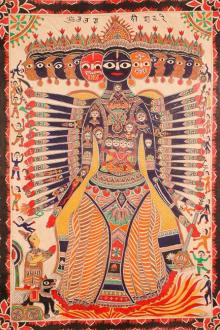
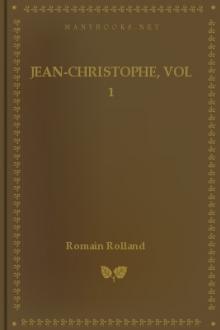
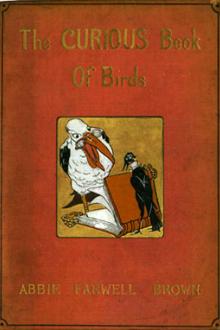

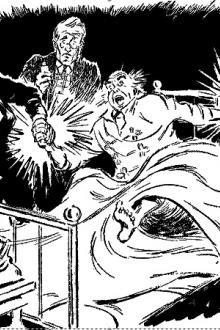
Comments (0)